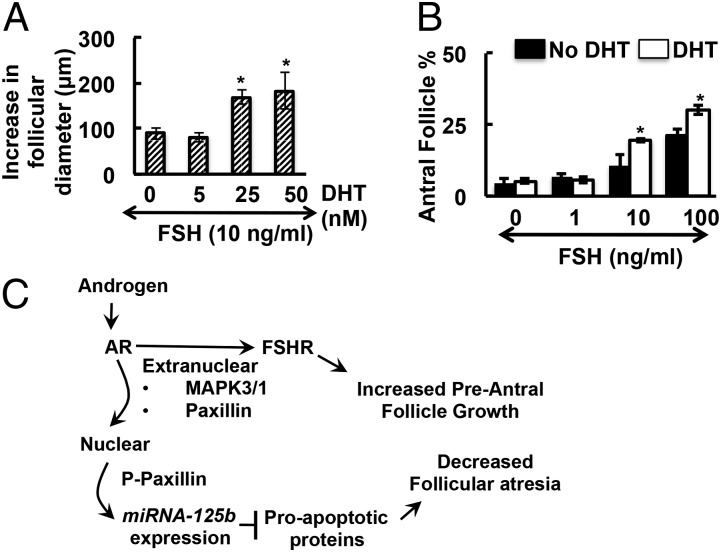Fig. 6.
(A) Androgens enhance FSH-mediated in vitro follicle growth in a dose-dependent manner. Increase in diameter of follicles cultured 4 d with 10 ng/mL FSH and with or without different concentrations of DHT. The difference in follicular diameter from day 0 and day 4 of culture is presented as a measure of follicle growth (*P ≤ 0.05 vs. no DHT, n = 15 follicles per treatment). (B) Androgens enhance FSH-mediated preantral to antral follicle transition in a whole ovary culture. Percentage of antral follicles in ovaries cultured with different concentrations of FSH in presence or absence of DHT (25 nM) for 5 d. Data are presented as percent of antral follicles relative to total follicles counted (*P ≤ 0.05 vs. no DHT, n = 3 ovaries per treatment). (C) Proposed model for androgen actions in follicular development. Based on work in prostate cancer cells (16, 17), androgens signal via classical ARs and extranuclear paxillin to promote MAPK3/1 signaling. MAPK3/1 then promotes increased FSHR protein expression that enhances the sensitivity of preantral follicles to FSH-mediated growth. In addition, extranuclear AR-mediated activation of MAPK3/1 leads to phosphorylation of paxillin on serines (P, paxillin), allowing paxillin to enter the nucleus and mediate AR-induced transcription of miR-125b. This miR suppresses apoptosis, thus attenuating preantral follicle atresia. The resultant androgen-mediated increased follicle growth plus decreased follicular atresia promotes follicle development and subsequent ovulation.

